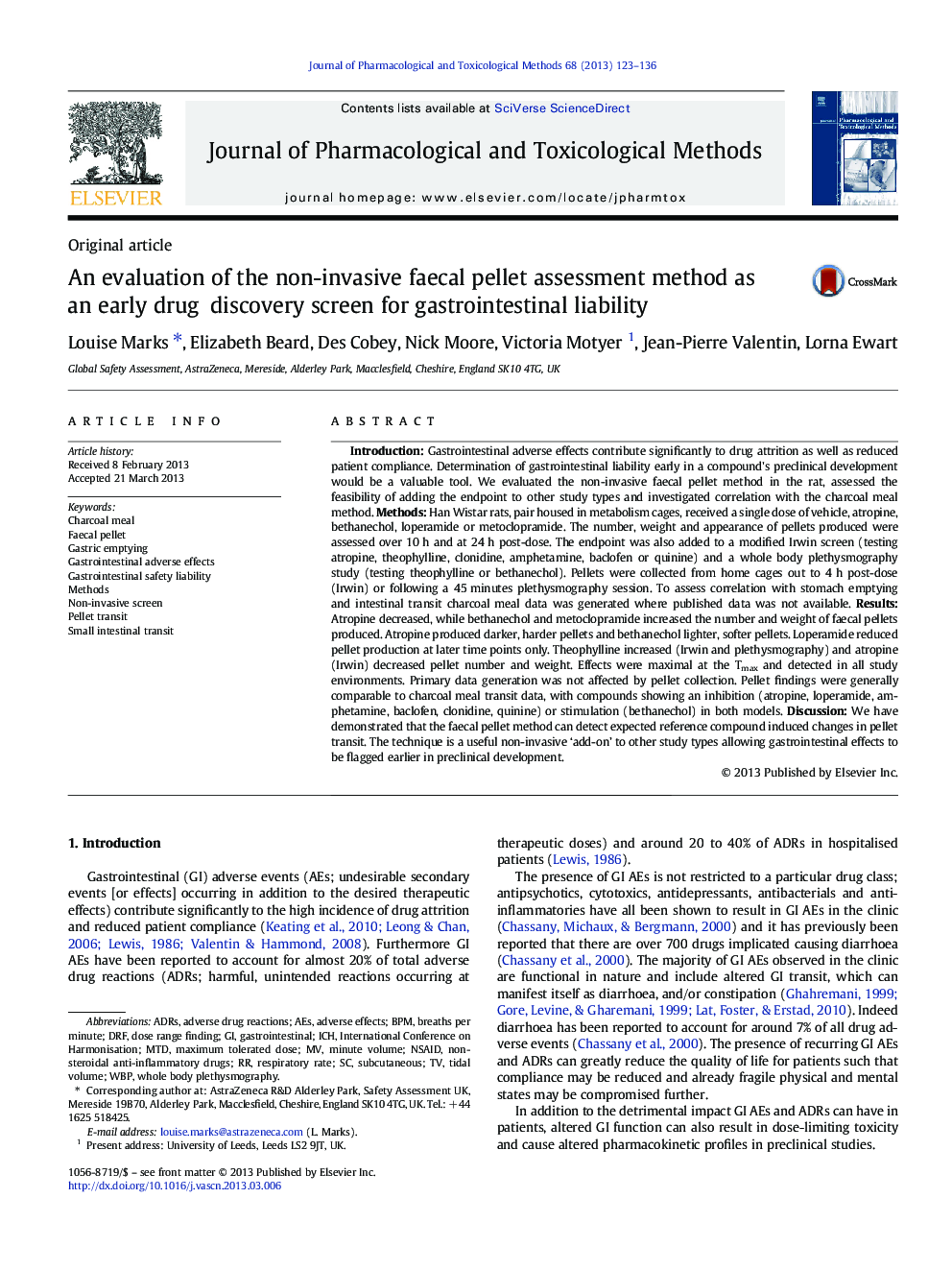| کد مقاله | کد نشریه | سال انتشار | مقاله انگلیسی | نسخه تمام متن |
|---|---|---|---|---|
| 5841026 | 1124503 | 2013 | 14 صفحه PDF | دانلود رایگان |
IntroductionGastrointestinal adverse effects contribute significantly to drug attrition as well as reduced patient compliance. Determination of gastrointestinal liability early in a compound's preclinical development would be a valuable tool. We evaluated the non-invasive faecal pellet method in the rat, assessed the feasibility of adding the endpoint to other study types and investigated correlation with the charcoal meal method.MethodsHan Wistar rats, pair housed in metabolism cages, received a single dose of vehicle, atropine, bethanechol, loperamide or metoclopramide. The number, weight and appearance of pellets produced were assessed over 10Â h and at 24Â h post-dose. The endpoint was also added to a modified Irwin screen (testing atropine, theophylline, clonidine, amphetamine, baclofen or quinine) and a whole body plethysmography study (testing theophylline or bethanechol). Pellets were collected from home cages out to 4Â h post-dose (Irwin) or following a 45Â minutes plethysmography session. To assess correlation with stomach emptying and intestinal transit charcoal meal data was generated where published data was not available.ResultsAtropine decreased, while bethanechol and metoclopramide increased the number and weight of faecal pellets produced. Atropine produced darker, harder pellets and bethanechol lighter, softer pellets. Loperamide reduced pellet production at later time points only. Theophylline increased (Irwin and plethysmography) and atropine (Irwin) decreased pellet number and weight. Effects were maximal at the Tmax and detected in all study environments. Primary data generation was not affected by pellet collection. Pellet findings were generally comparable to charcoal meal transit data, with compounds showing an inhibition (atropine, loperamide, amphetamine, baclofen, clonidine, quinine) or stimulation (bethanechol) in both models.DiscussionWe have demonstrated that the faecal pellet method can detect expected reference compound induced changes in pellet transit. The technique is a useful non-invasive 'add-on' to other study types allowing gastrointestinal effects to be flagged earlier in preclinical development.
Journal: Journal of Pharmacological and Toxicological Methods - Volume 68, Issue 1, JulyâAugust 2013, Pages 123-136
